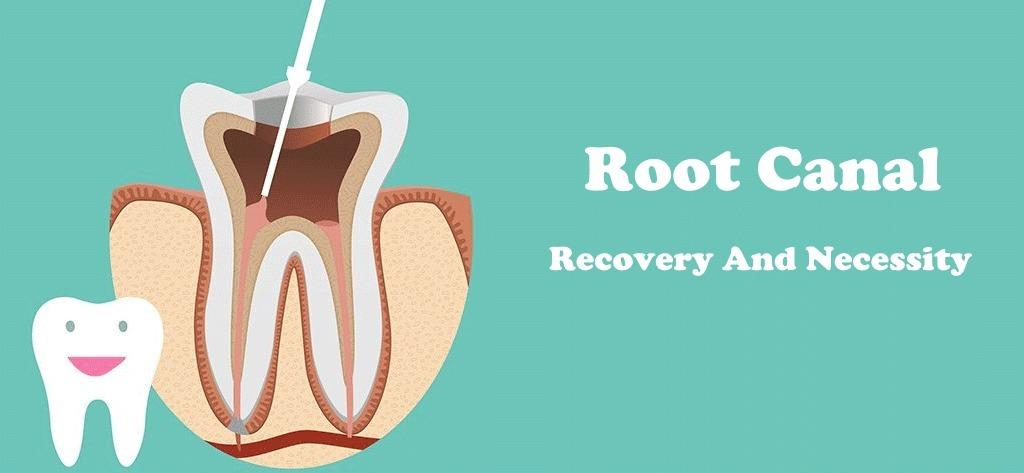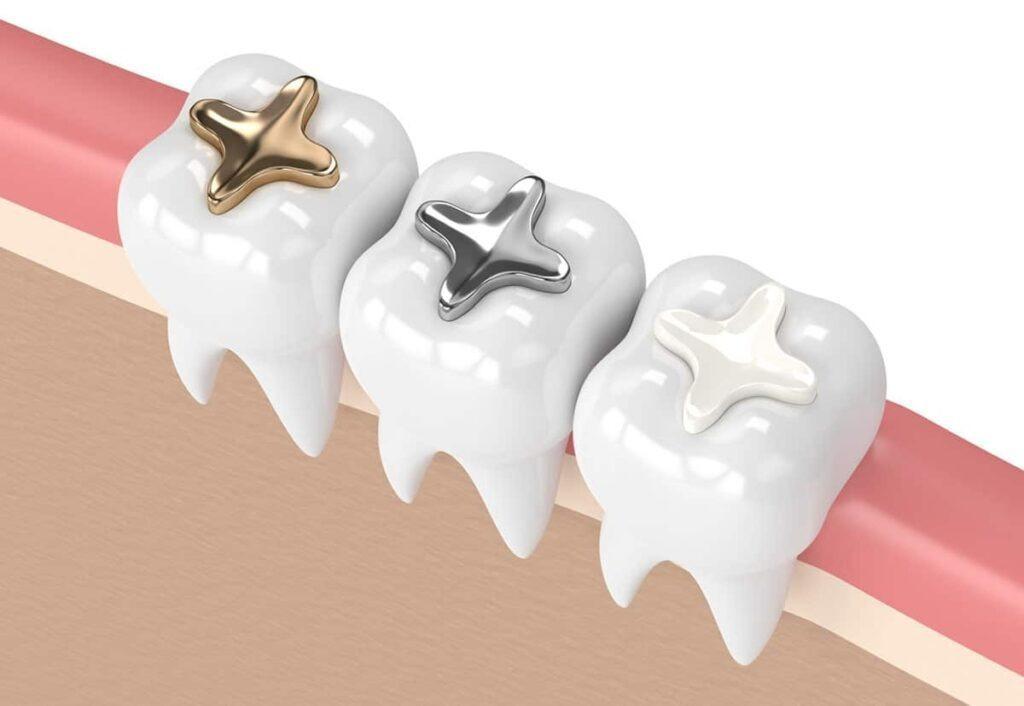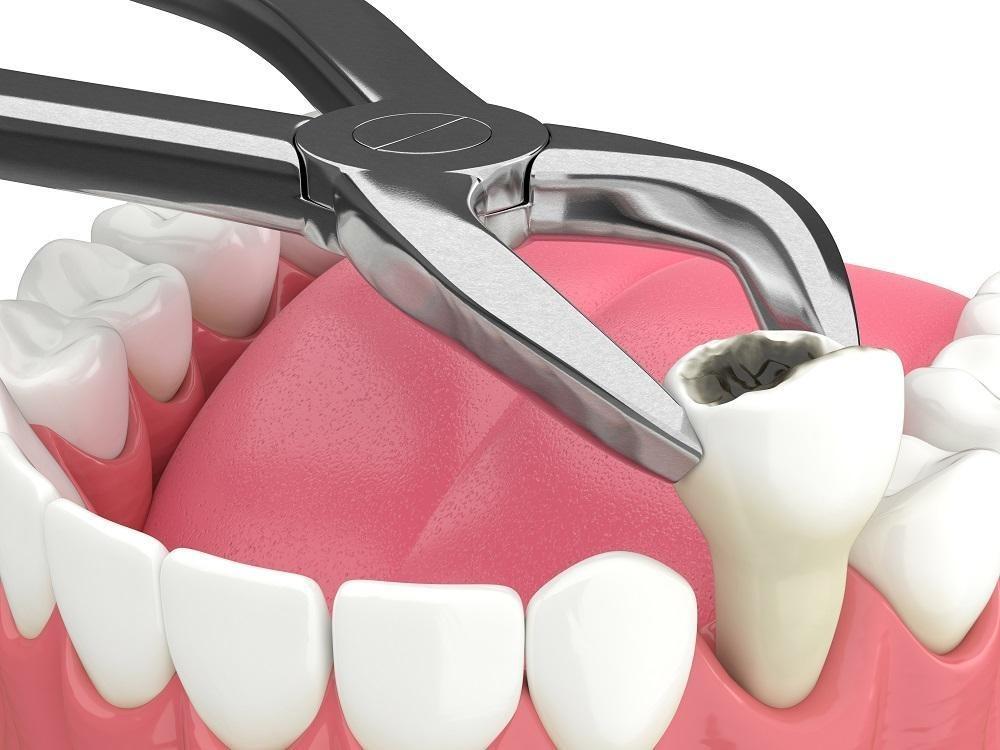When you hear the term “root canal,” you might immediately think of pain and discomfort. This reaction is understandable, for years, root canals have carried an unfair reputation as one of the most dreaded dental procedures. However, thanks to advancements in modern dentistry, this perception couldn’t be further from the truth. Today, root canal treatment is a routine, highly effective, and virtually painless way to save a damaged or infected tooth.
Understanding what the procedure really involves can help you overcome any anxiety and make informed decisions about your dental health. Let’s explore what a root canal is, the myths surrounding its pain, and why knowing the facts before undergoing the procedure is so important.
What Is a Root Canal?
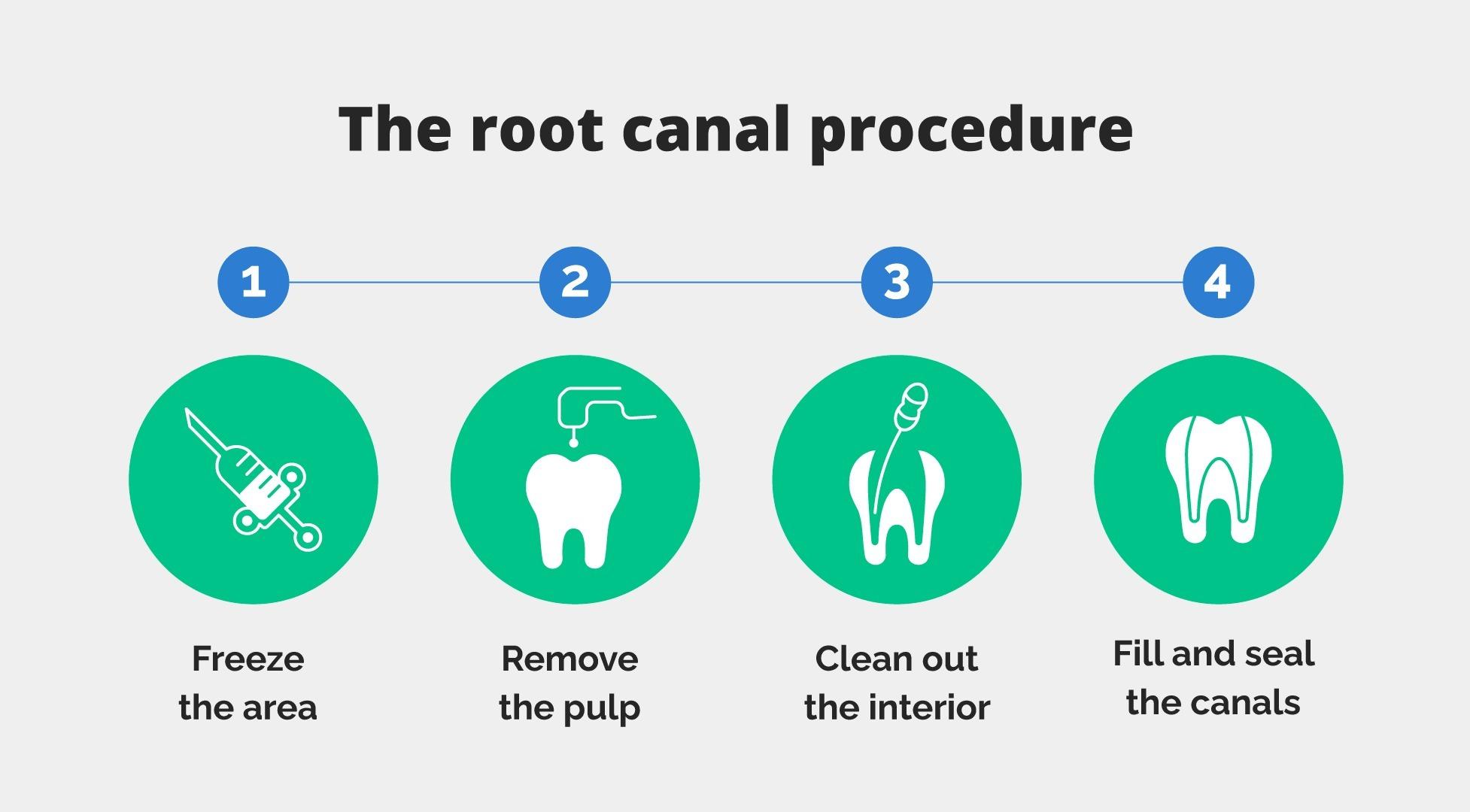
A root canal is a dental procedure designed to save a tooth that is badly decayed, infected, or damaged. Inside every tooth is a soft tissue called the pulp, which contains nerves, blood vessels, and connective tissue. When this pulp becomes infected, often due to deep decay, cracks, or trauma, it can cause severe pain and swelling.
During a root canal, your dentist removes the infected pulp, cleans the inside of the tooth thoroughly, and seals it to prevent further infection. The tooth is then restored with a filling or crown, allowing it to function like any other healthy tooth.
In short, a root canal doesn’t cause pain; it relieves the pain that results from infection or inflammation inside the tooth.
Common Misconceptions About Root Canal Pain
One of the biggest reasons people fear root canals is due to misinformation and outdated experiences. Decades ago, when dental technology and anesthesia were limited, root canals could be uncomfortable. But with today’s advanced techniques, local anesthesia, and modern equipment, most patients report that the procedure feels very similar to getting a regular cavity filled.
Here are a few common myths and the facts that debunk them:
- Myth: Root canals are extremely painful.
Fact: Modern root canals are performed under anesthesia, making the process virtually pain-free. Most patients experience relief from the toothache they had before treatment. - Myth: It’s better to pull the tooth instead of getting a root canal.
Fact: Saving your natural tooth through a root canal helps maintain proper chewing function and prevents neighboring teeth from shifting out of place. - Myth: Root canal treatment causes illness.
Fact: This outdated belief has been disproven by scientific research. A properly done root canal is a safe and effective procedure that promotes oral health.
Why Understanding the Procedure Matters
Dental anxiety often comes from not knowing what to expect. By learning how a root canal works and what happens during each step, you can approach the treatment with confidence and peace of mind. Understanding the process also helps you recognize the importance of early dental care, addressing infection before it spreads or causes more serious problems. When patients know that a root canal is performed under local anesthesia, is completed within one or two visits, and provides long-term relief, they are far less likely to delay necessary treatment. This not only reduces pain but also helps preserve your natural smile for years to come.
Why Root Canals Are Needed
Root canal treatment becomes necessary when the tooth pulp becomes inflamed or infected. This can happen for several reasons, including:
- Deep cavities or decay: When bacteria penetrate deep into the tooth, reaching the pulp.
- Cracked or fractured teeth: Cracks can expose the inner tissue to bacteria and infection.
- Repeated dental procedures: Multiple restorations on the same tooth can irritate or damage the pulp.
- Dental trauma: A physical injury, even without visible cracks, can harm the pulp over time.
Recognizing the symptoms early is key to preventing the infection from spreading. You might need a root canal if you experience:
- Persistent or throbbing tooth pain.
- Sensitivity to hot or cold foods that lingers even after removal of the stimulus.
- Swelling of the gums near the affected tooth.
- Discoloration or darkening of the tooth.
- Tenderness when biting or touching the tooth.
If you notice any of these signs, it’s important to visit your dentist as soon as possible. Early treatment can save your tooth and spare you from more serious dental complications later on.
Pain During a Root Canal
For many people, the thought of a root canal immediately brings up images of pain and discomfort. However, with today’s modern dental techniques, advanced anesthesia, and improved equipment, root canal treatment is now a virtually pain-free procedure. Understanding what really happens during the process can help ease anxiety and prepare you for a smooth, comfortable experience.
Local Anesthesia and Pain Management
Before the procedure begins, your dentist will administer local anesthesia to numb the affected tooth and the surrounding area. This ensures that you feel no pain during the treatment. You might feel a slight pinch as the anesthetic is injected, but this lasts only a few seconds.
Once the area is numb, your dentist can safely and comfortably remove the infected pulp without causing discomfort. Modern dentistry has evolved significantly with digital imaging, precision instruments, and refined anesthetic techniques. Dentists can now perform root canals that are as comfortable as getting a routine dental filling. For patients with dental anxiety, sedation options such as nitrous oxide (“laughing gas”) or oral sedatives are also available to enhance relaxation during the procedure.
What You May Feel During the Procedure
It’s normal to wonder what you’ll feel during a root canal. While you shouldn’t feel any sharp pain, you may experience slight pressure or mild sensations as your dentist works on cleaning and shaping the canals. This is completely normal and usually not uncomfortable.
The duration of a root canal depends on the complexity of the tooth. Typically, the entire procedure takes about 60 to 90 minutes. In some cases, it may be completed in one visit, while more complex cases might require two.
Most patients report that the experience is far easier than expected. After the anesthesia wears off, you might feel mild soreness or tenderness for a day or two, but this is manageable with over-the-counter pain relievers and typically subsides quickly.
Pain After a Root Canal
It’s natural to feel some concern about what happens after a root canal. While the procedure itself is typically pain-free, mild discomfort or tenderness afterward is completely normal. Understanding what kind of pain is expected, how to manage it, and when to call your dentist will help ensure a smooth recovery and long-lasting results.
Normal Post-Treatment Sensitivity
After a root canal, it’s common to experience mild soreness or tenderness in the treated area for a few days. This occurs because the tissues around the tooth’s root may still be slightly inflamed from the infection or from the cleaning process.
You might notice:
- Sensitivity when chewing or applying pressure.
- Slight tenderness in the gums near the treated tooth.
- Minor discomfort that fades gradually.
In most cases, this post-procedure sensitivity lasts only two to five days. As your body heals, the discomfort should lessen each day. If your dentist places a temporary filling or crown, you may feel a bit of unevenness when biting down. This will be adjusted during your follow-up visit.
Managing Post-Procedure Pain
Mild discomfort after a root canal can easily be managed with simple at-home care and over-the-counter pain relievers. Here are a few effective ways to stay comfortable while healing:
- Take ibuprofen or acetaminophen (as directed by your dentist) to reduce pain and inflammation.
- Avoid chewing on the treated tooth until your permanent crown or filling is placed.
- Stick to soft foods like soups, yogurt, and mashed potatoes for the first few days.
- Maintain good oral hygiene by brushing and flossing gently to keep the area clean and free from bacteria.
- Avoid very hot, cold, or hard foods that can irritate the treated area.
Following these steps helps your tooth and surrounding tissues heal faster and prevents unnecessary irritation.
When Pain Is a Sign of a Problem
While mild soreness is normal, severe or persistent pain after a root canal may indicate that something needs attention. In rare cases, bacteria can remain inside the canal, or the tooth may develop a new infection.
Contact your dentist if you experience:
- Intense pain that doesn’t improve after a few days.
- Swelling of the gums or face.
- Pus discharge or a foul taste near the treated tooth.
- Fever or general signs of infection.
Prompt follow-up care allows your dentist to identify and treat any complications early, ensuring your tooth heals properly and remains strong for years to come.
Factors That Affect Pain Levels

Although root canal procedures are designed to be as comfortable as possible, every patient’s experience can vary slightly. Some people feel almost no discomfort, while others may notice mild soreness afterward. Several factors can influence how much pain or sensitivity you experience both during and after treatment.
Tooth Condition Before Treatment
One of the biggest factors that affects pain levels during and after a root canal is the condition of the tooth before treatment. If the tooth is already severely infected or inflamed, the surrounding nerves and tissues are more sensitive. This can make the area slightly more reactive during treatment and may lead to minor discomfort as it heals. Similarly, a deep cavity or advanced decay that has reached the pulp can cause greater inflammation before the procedure even begins.
In most cases, however, the root canal itself actually relieves the intense pain caused by infection. Once the damaged pulp is removed and the infection is cleared, most patients experience a noticeable improvement in comfort within a day or two.
Dentist’s Experience and Technique
The skill, experience, and technique of your dentist or endodontist also play a major role in how comfortable your root canal feels.
A highly trained professional who uses modern tools and technology, such as rotary instruments, digital imaging, and precision anesthesia, can complete the procedure efficiently and with minimal discomfort. Experienced dentists know how to manage anesthesia effectively, control pressure during the procedure, and ensure that your bite feels natural afterward. Choosing a dentist who specializes in root canals or endodontic care can greatly reduce treatment time, discomfort, and post-procedure soreness.
Patient’s Pain Tolerance
Every person has a unique pain threshold, which means experiences vary from patient to patient. Some people may feel mild pressure and sensitivity, while others barely notice anything at all. Factors such as anxiety, stress, and overall health can also influence how your body perceives discomfort. To make the experience as pleasant as possible, communicate openly with your dentist. If you’re feeling nervous or have a low pain tolerance, your dentist can offer sedation options or additional numbing to ensure you stay relaxed and comfortable throughout the procedure.
Tips to Reduce Anxiety and Pain
It’s completely normal to feel a bit nervous before a root canal, especially if it’s your first time. Dental anxiety is common, but with the right preparation and mindset, you can make your experience calm, comfortable, and virtually pain-free. Here are some practical tips to help ease fear and reduce discomfort before and during your root canal treatment.
Discuss Sedation or Nitrous Oxide Options
If you feel anxious about dental procedures, discuss sedation options with your dentist. Many clinics now offer nitrous oxide (laughing gas) or oral sedatives to help patients relax.
- Nitrous oxide works quickly, helping you feel calm and comfortable throughout the procedure, and it wears off soon after treatment, so you can usually drive yourself home.
- Oral sedation may be used for patients with moderate anxiety, allowing you to stay awake but deeply relaxed.
Discussing these options with your dentist in advance can significantly impact how confident and comfortable you feel on the day of your appointment.
Ask Your Dentist About the Procedure Beforehand
One of the best ways to overcome fear is through understanding. Ask your dentist to explain what will happen step by step, from numbing the area to cleaning the tooth and sealing it. When you know what to expect, there’s less room for uncertainty or fear of the unknown. Your dentist can also answer any questions about how long the procedure will take, what sensations you might feel, and what recovery will look like afterward. Clear communication helps build trust and reassurance, turning a stressful situation into a manageable one.
Practice Relaxation Techniques During Treatment
Simple relaxation strategies can go a long way in keeping you calm and reducing discomfort:
- Breathe deeply and slowly to keep your body relaxed and your mind focused.
- Listen to calming music or a podcast if your dentist allows it.
- Focus on positive thoughts, remind yourself that the procedure is relieving pain, not causing it.
- Use hand signals with your dentist to indicate if you need a short break or feel any discomfort.
These small techniques can help your body stay relaxed and make the experience feel much shorter and smoother.
Benefits of a Root Canal
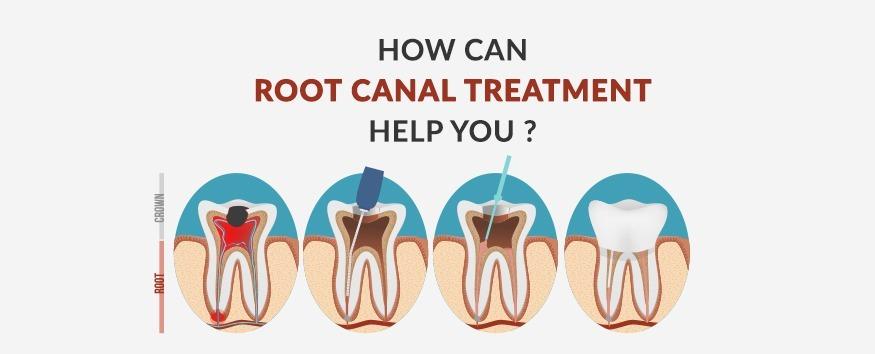
Root canal therapy isn’t just about eliminating pain; it’s about saving your natural tooth and restoring your oral health. Many people underestimate how beneficial this treatment can be, especially when compared to tooth extraction or leaving an infection untreated. Here are the key advantages of getting a root canal:
Saves the Natural Tooth
The most significant benefit of a root canal is that it allows you to keep your natural tooth. Instead of removing the tooth, your dentist removes only the infected pulp and restores the structure with a filling or crown.
Keeping your natural tooth helps maintain:
- Proper chewing and biting function.
- The alignment of surrounding teeth.
- Your natural appearance and smile.
Preserving your original tooth is always better than replacing it with an artificial one, both for comfort and long-term oral health.
Relieves Severe Pain Caused by Infection
A tooth infection or inflamed pulp can cause intense, throbbing pain that makes eating, sleeping, and speaking difficult. Root canal treatment eliminates the source of that pain by removing the infected tissue and cleaning the area thoroughly. Most patients feel immediate relief after the procedure, as the pressure and infection that caused discomfort are gone. Rather than being painful, a root canal actually ends the pain and allows healing to begin.
Prevents the Spread of Infection to Other Teeth
An untreated tooth infection can easily spread to nearby teeth, gums, and even the jawbone, leading to more serious complications. By removing the infection and sealing the affected tooth, a root canal prevents bacteria from spreading further. This not only protects surrounding teeth but also supports your overall oral health and reduces the risk of more invasive treatments later on.
Conclusion
Despite their intimidating reputation, root canals are generally not as painful as many people believe. Thanks to modern dentistry, advanced anesthetics, and improved techniques, most patients experience little to no pain during the procedure and only mild soreness afterward.
Throughout the treatment, pain is carefully managed with local anesthesia, and any post-procedure discomfort can be easily controlled with over-the-counter pain relievers. In fact, for most people, the root canal brings relief from the severe toothache caused by infection or inflammation.
The key to a comfortable and successful experience is early intervention. Visiting your dentist at the first sign of tooth pain or sensitivity allows the infection to be treated before it worsens, ensuring better results, faster healing, and less discomfort overall.

